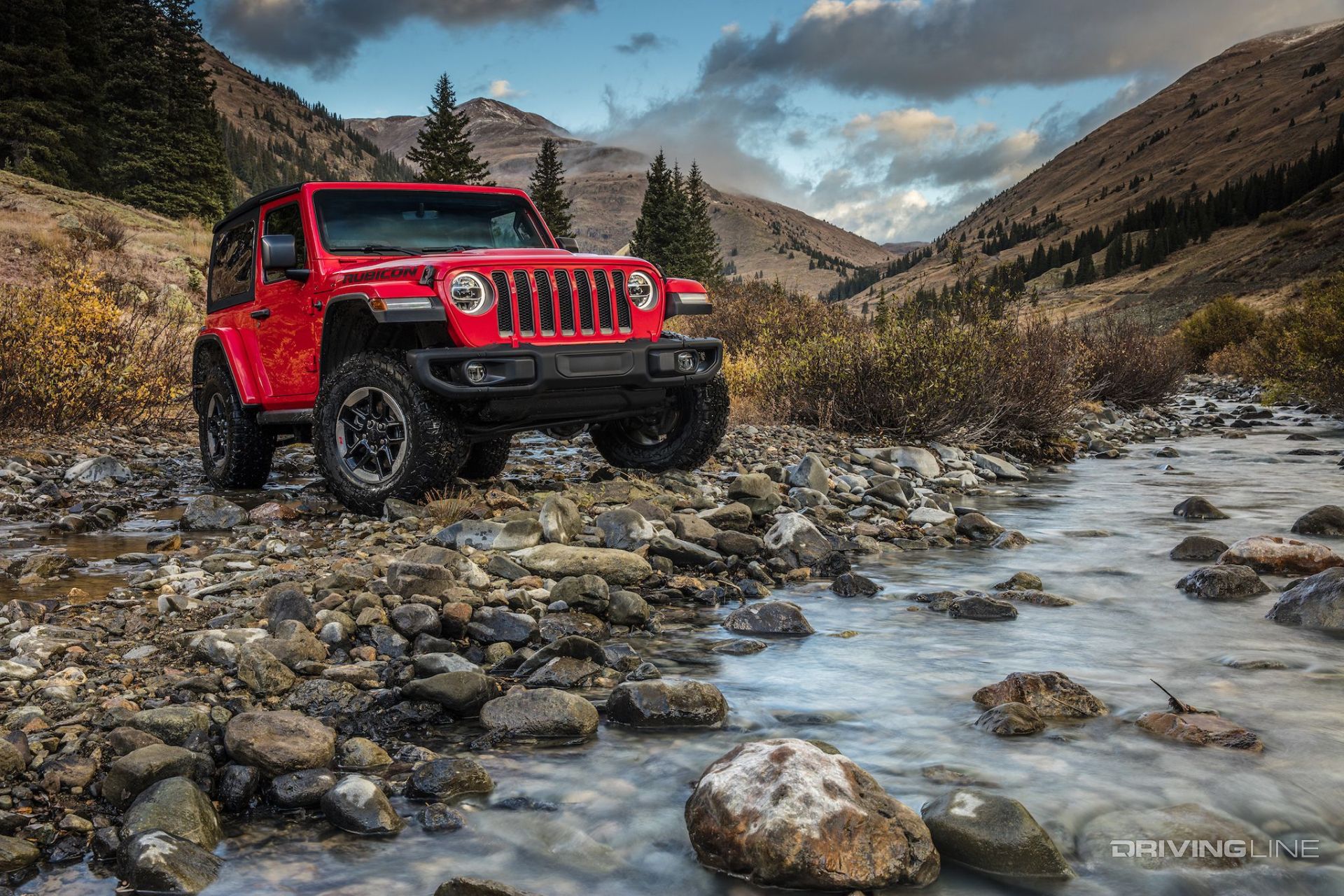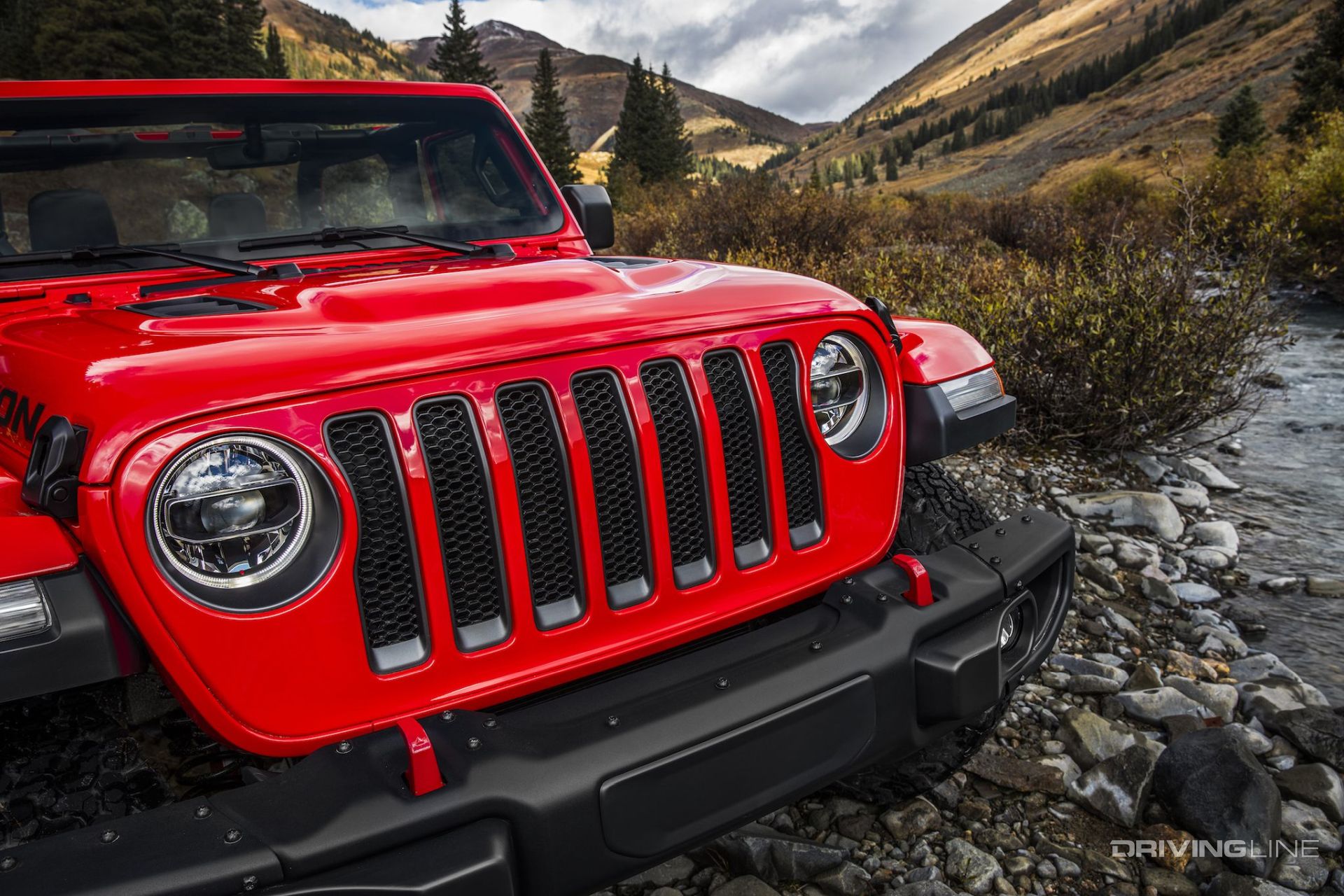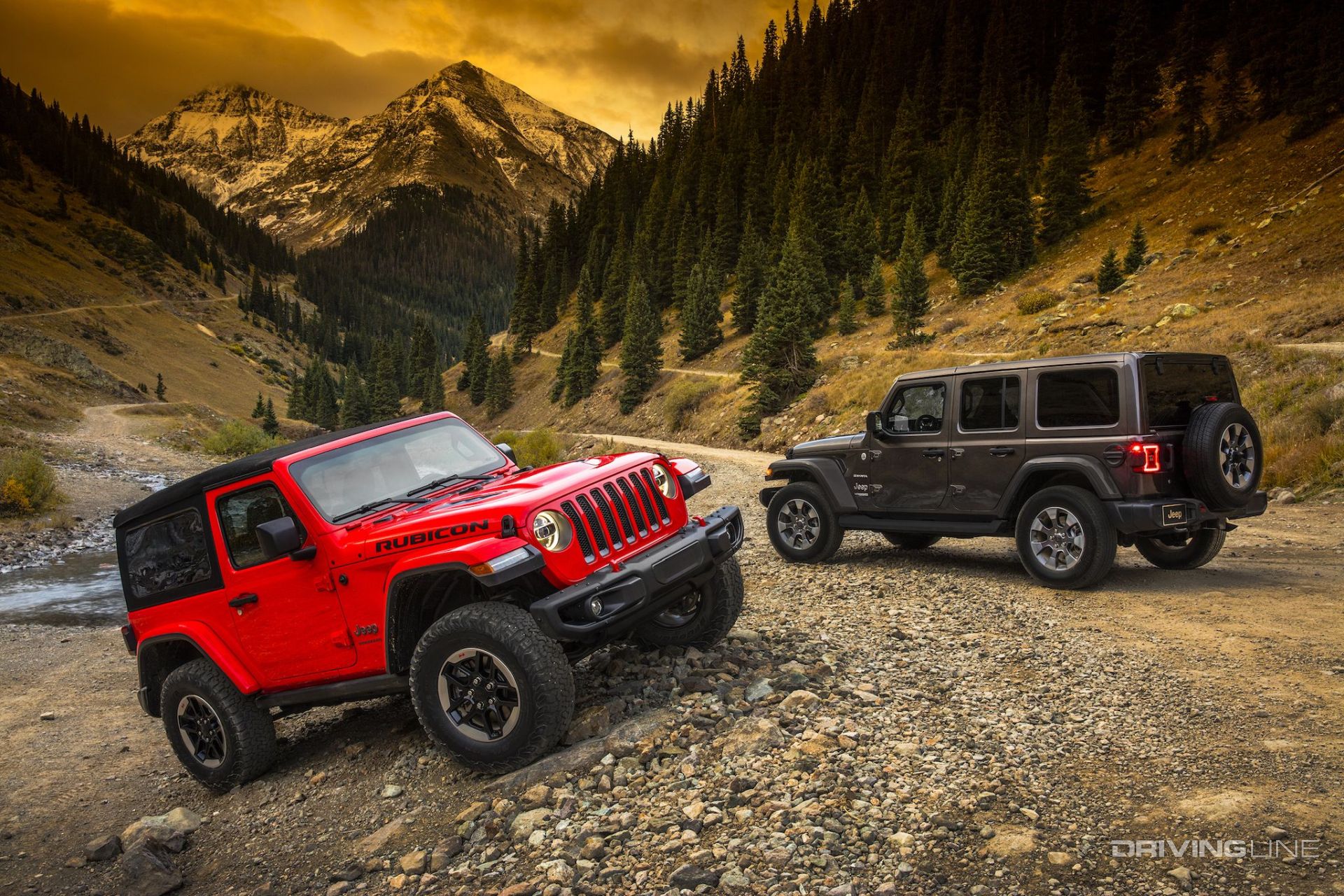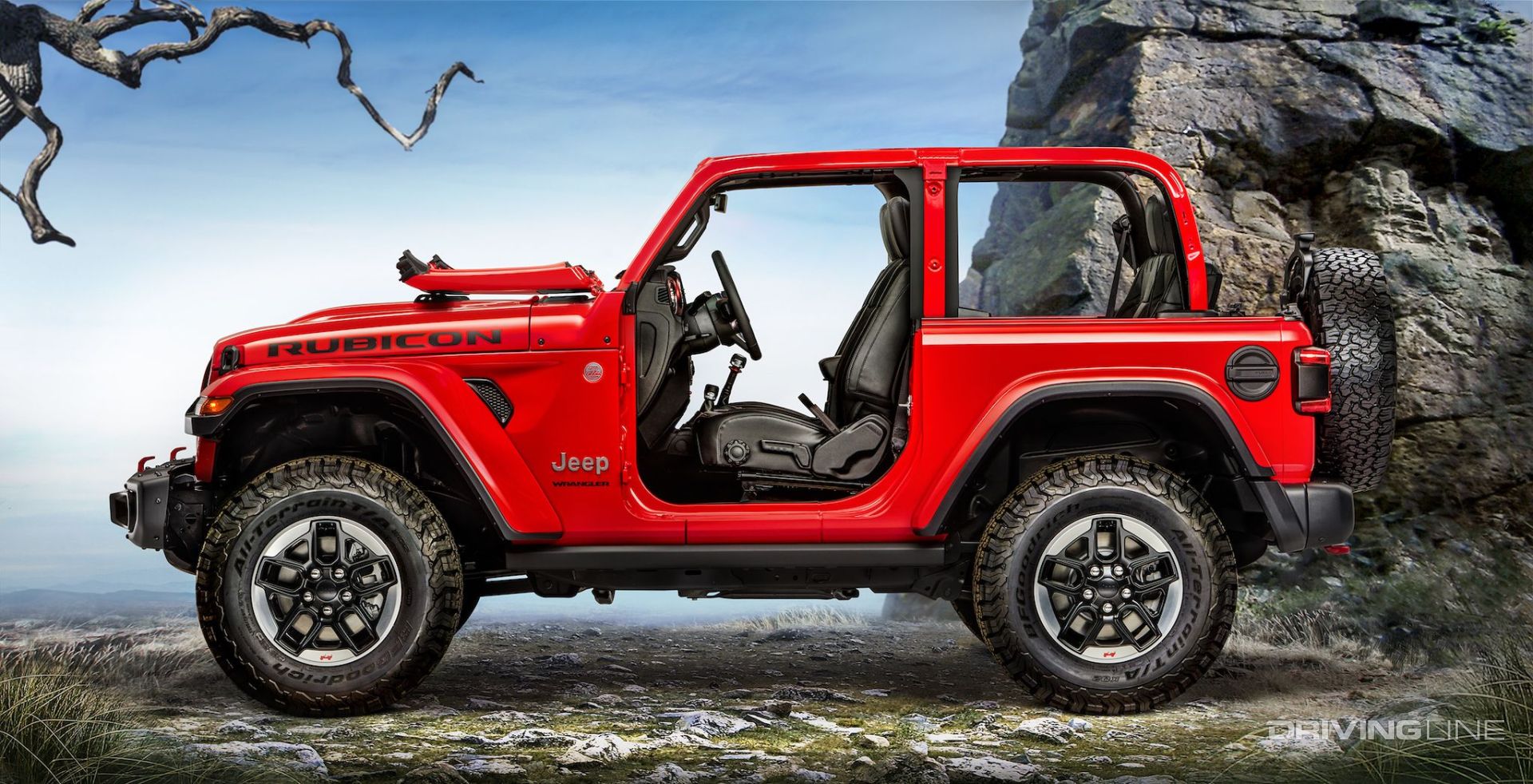Jeep enthusiasts are a particular bunch. This is especially true for diehard Wrangler owners. Unlike other 4x4 vehicles that often just look the part, Wrangler owners have grown to expect the out-of-the-box capability unlike any other SUV on the market. Jeep understands that its customers are some of the most passionate and outspoken, as such, the company knew the bar would be set high coming off of the extremely successful 2007 to present Jeep Wrangler JK.
Today, Jeep finally unveiled the 2018 JL. Putting scary rumors to rest, the latest generation Wrangler still had all of the earmarks of the legacy machine. This includes removable doors and top, a fold down windshield, solid front and rear axles, and of course, the option of a manual transmission. While the JL Wrangler may appear similar to the JK, there’s extensive changes from front to back. Here, we’re looking at 10 of the most important.

1: New Engines!

There are now three engine options. A 2.0L turbocharged inline-4 cylinder, 3.6L Pentastar V6, and a 3.0L EcoDiesel V6, which we won’t see until 2019. The engine specs are as follows:
2.0L: 270hp / 295 lb-ft of torque
3.6L: 285hp / 260 lb-ft of torque
3.0L: 260hp / 442 lb-ft of torque
2: Aluminum Bits

The JL continues body-on-frame construction, but for the first time, the doors, hood and tailgate will all be made from aluminum. The doors are actually 30-percent lighter than the JK, which is music to the ears of anyone who’s ever pulled one off. Thanks to the lighter materials and revised frame design, the JL was able to shave nearly 200 pounds over its predecessor.
3: New Axles

The JK was known for its problematic front axle which was notorious for bending under hard use when paired with oversized tires. The good news is the axles have been completely revised with thicker-wall axletubes and new C-knuckles that are now paired with aluminum steering knuckles. The ring-and-pinions are slightly smaller however (8.27-in front and 8.66-in rear) compared to the outgoing 8.8 Dana 44s. Another bummer is the return of the central-axle disconnect on the front axle. This was a fuel economy play, and thankfully, is at least electronically actuated, unlike the problematic vacuum systems of old. Time will tell if this will be a problem. The five-link coil-sprung suspension is still used to secure the axles in place. However, the rear shocks have been moved outboard and track bar positions raised to create an improved roll center.
4: Fresh Face

A familiar seven-slot grille can be found on the JL, but there’s now a noticeable kink at the top of the grille and the turn indicators have been moved to the fenders. The slightly larger (and optional) LED headlights shown are now integrated, making swapping headlights a bit more challenging. Another great upgrade is the new style hood latches, which is said to remove all of the hood flutter common on the JK platform.
5: Two Transmission Options

An all-new 850RE TorqueFlite 8-speed automatic transmission will be the only option for those looking for an automatic. It’s fit with a 4.71:1 first gear ratio, which should make for excellent crawl control and take-off power. If you’re looking to row your own gears, you’ll be happy to find a fresh D478 Aisin-built six-speed manual transmission. While it’s only available behind the Pentastar V6, you will have an impressive 5.13:1 First gear ratio to easily crawl the trail.
6: The Rubicon Still Rules

The most capable off-road SUV package just got a little better. For those opting for a Rubicon model, you’ll get a few new features. This includes a set of high-line fender flares, which are said to create enough room for 35-inch-tall tires sans a lift. Standard tire size for the Rubicon jumps to a 33-inch-tall all-terrain-tire. A 4:1 gear ratio is still standard in the transfer case, as are the selectable front and rear lockers, and electronic disconnect sway bar.
7: Electronic Steering

Most OEs are moving to an electronic steering configuration to increase fuel efficiency and reduce engine drag. The Wrangler is now officially part of the electronic steering fold. While a conventional steering gear box is frame mounted, it’s comprised of aluminum. This could be the first major weak link we see on the JL. We’ve talked with the steering geniuses at PSC Motorsports who are already working on a steering upgrade for the JL.
8: Interior Refresh

A full interior refresh has given the JL a fresh feel and look. All of the touch points as well as materials used have been greatly improved. Grab handles are now securely mounted to the A and B pillars, making getting in the Wrangler much easier. A new dash cluster, along with a massive 8.4-inch head unit also adds to the familiar, but updated interior space. Increased storage options and along with a sport bar that is now body colored and adored with plastic panels (good bye fabric covers!) also found its way in.
9: Longer

Both the two-door and four-door Unlimited model got a wheelbase push (1.4 inches on the two-door and 2.4 inches for the Unlimited). This makes a bigger difference on the Unlimited as it adds a bit more leg room for the back seat passengers.
10: Better Body

There are many small touches that make the body of the JL superior to the JK. One of our favorites is the move to a flat and more swooped front windshield. Jeep even went a step further and made it where dropping the front windshield down is no longer a royal pain. In fact, they say it can be done in less than five minutes and the hinges have been improved so the paint doesn’t chip. Other small cues such as lowering the spare tire mount to increase rear visibility, moving the license plate to the bumper, and a new hard top with longer drip rails and lighter panels, all show that Jeep was listening to the consumer when designing the JL.
Obviously, there’s still more that we haven’t covered. We hope to get behind the wheel of the JL soon to give you the full recap along with driving impression to the all-new Wrangler!